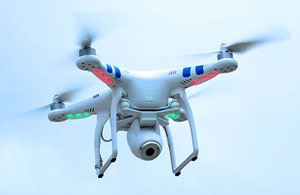|
Agricultural Technology Fair To Be Held July 17
DR. WILLIAM J. WIEBOLD
COLUMBIA, MO.
The Agriculture Technology Fair will be held at the Bradford Research Center on July 17, 2014. This Fair will provide visitors with a peak into the future of agriculture. Four cutting-edge technologies will be discussed and demonstrated. For each technology, a short discussion will be held inside the Technology Center building. Then, the participants will convene outdoors for demonstrations and additional discussion.
Brent Myers, MU corn extension specialist, will discuss how planting rate prescriptions for planters can be developed. Many new planters are capable of changing planting rates on-the-go. Brent will explain what field characteristics are needed to develop appropriate planting rate prescriptions. Representatives from several implement manufacturers will demonstrate how planting rate maps are entered into their planters.
Rob Kallenbach, MU forage specialist, will discuss the use of grazing wedges to guide movement of dairy and beef herds to the next pasture or grazing paddock. Rob has two web sites (one for beef and one for dairy) to help producers monitor pastures. Forage heights, which estimate forage growth, quantity, and quality, are required information for the function of the grazing wedge calculators. Most producers use grazing sticks or rising plate meters to measure forage heights. Rob will demonstrate an ultrasound sensor on an all-terrain vehicle that collects data for the wedge. The sensor accurately measures forage height 20 times each second. Data from the sensor can be entered directly into the grazing web. This on-the-go sensor is much easier to use than other methods of measuring forages.
Peter Scharf, MU nutrient management specialist, is a leader in using sensors to estimate nitrogen fertilizer needs for corn and wheat. Peter will discuss sensors that read the greenness of plant leaves and how that information can be used to develop in-season N fertilizer recommendations.
Bill Wiebold will discuss the use of unmanned aerial vehicles (UAV) in agriculture. In its simplest form, a UAV system includes some type of small, remotely-piloted vehicle and a camera. The camera can take either images or videos or both. These images and videos are stored for later observation. Often, the system will allow the pilot to see what the camera sees in real time, either through an app on a smartphone or some type of first-person-viewer. Part of Bill’s discussion will involve FAA regulations and the need to respect privacy.

Additional sensors that will allow for more complicated analyses will be also discussed. Useful sensors already exist on ground-based vehicles, aircraft, or satellites. Examples are multispectral, hyperspectral, near infrared, and LIDAR sensors. LIDAR uses lasers to measure height of objects including plants. Another useful sensor measures plant or soil temperature. Plants maintain temperature in a narrow range by evaporating water from leaves. If water intake is restricted (e.g. root damage) or water outflow from leaves is reduced (e.g. drought or disease), leaf temperatures will increase. Temperature sensors can be amazingly sensitive and should be able to give early warning of possible problems.
Registration for the Ag Technology Fair begins at 8:00 am with the first sessions scheduled to begin at 8:30. Registration fee is $25 and includes lunch. Demonstrations will end by 5:00pm. For more information contact the Bradford Research Center by phone (573-884-7945) or email (ReinbottT@missouri.edu). Preregistration is not required, but greatly appreciated. Bradford Research Center is east of Columbia in Boone County, south of Highway WW. From the Broadway exit on Highway 63, travel east 6.5 miles. Turn right on Rangeline Road and go 2 miles. There is a sign at WW and Rangeline. To use technology, set a navigation app for 4968 Rangeline Road. The web site for Bradford Research Center is bradford.cafnr.org. ∆
DR. WILLIAM J. WIEBOLD: Professor, Division of Plant Sciences, University of Missouri
|
|